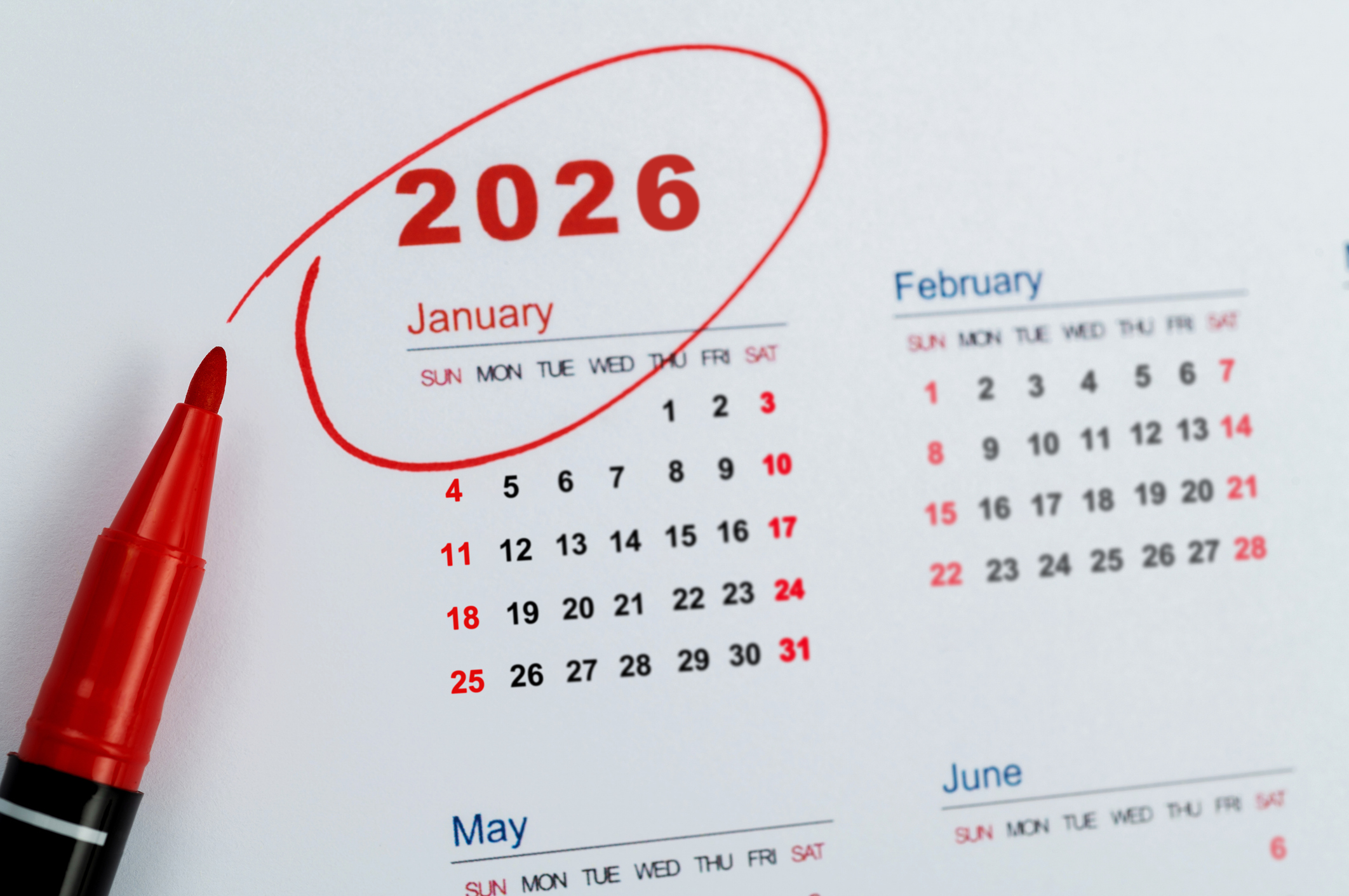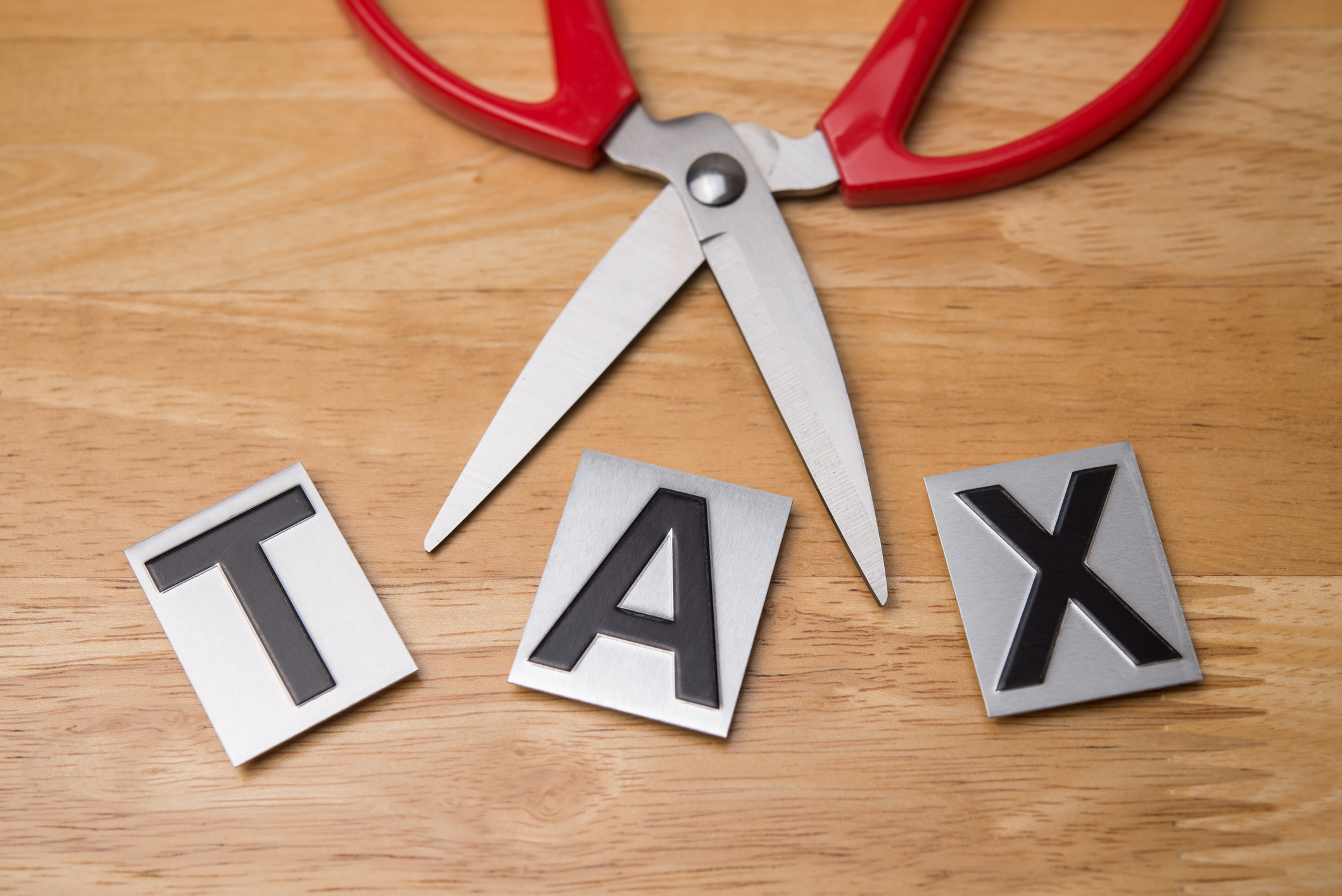Three Popular Tax Breaks Are Gone for Good in 2026
Here's a list of federal tax deductions and credits that you can't claim in the 2026 tax year. High-income earners could also get hit by a "surprise" tax bill.


Just when you thought you knew your federal income taxes, here comes a curveball: Key tax breaks are disappearing in 2026.
During his first presidency, Donald Trump signed the Tax Cuts and Jobs Act (TCJA) into law. The largest tax bill in recent decades temporarily halted several tax breaks, including deductions for individual investment costs, personal tax preparation fees and home office expenses for employees.
In his second term, Trump and the GOP have extended many of the TCJA tax cuts and enacted several new temporary tax benefits in a law Trump often refers to as the One Big Beautiful Bill (OBBB).
From just $107.88 $24.99 for Kiplinger Personal Finance
Become a smarter, better informed investor. Subscribe from just $107.88 $24.99, plus get up to 4 Special Issues

Sign up for Kiplinger’s Free Newsletters
Profit and prosper with the best of expert advice on investing, taxes, retirement, personal finance and more - straight to your e-mail.
Profit and prosper with the best of expert advice - straight to your e-mail.
This extensive tax and spending law, enacted on July 4, 2025, includes new incentives such as the car loan interest deduction, while also removing several tax credits and deductions that the TCJA previously suspended.
Here’s a list of tax breaks that will end in 2026 — and what that might mean for your household moving forward.
This article addresses personal income tax breaks on federal returns. Sole-proprietorships, S-corps, limited liability corporations (LLCs) and all other businesses might be subject to different rules under IRS regulations. Consult with a qualified professional for tax advice.
1. Which clean energy tax credits are going away?
Although most clean energy tax breaks were temporary, their expiration dates weren’t until 2032 or later, thanks to the Inflation Reduction Act passed during the Biden administration. Yet the new Trump tax bill eliminates several key residential energy tax breaks, effective 2026 (though some are expiring earlier).
Here are a few examples:
- Federal Electric Vehicle (EV) Tax Credit worth up to $7,500 (expiring after September 30, 2025).
- Residential Clean Energy Credit worth up to 30% of qualifying installations (until December 31, 2025).
- Energy Efficient Home Improvement Credit worth up to $3,200 (until December 31, 2025).
About 1.2 million households have used credits for residential clean energy investments, resulting in $6 billion in savings, according to the latest data released by the U.S. Department of the Treasury. That amounts to an average tax benefit per family of around $5,000.
Without these incentives, some taxpayers wanting to make the same investments will lose on tax savings in 2026 compared with just one year prior.
However, it’s important to note that the federal tax credit for at-home EV charger equipment isn’t ending until June 30, 2026. This means you might be able to save up to $1,000 in federal income taxes if you install qualifying charging equipment by the deadline next year.
Related: Homeowners Rush to Install Solar Panels Before 'Trump Tax Bill' Cuts Credit.
2. Itemized deductions are not allowed, and the home office deduction for employees is gone
Before the TCJA, many miscellaneous itemized deductions could be claimed on your individual federal income tax return.
The deductions below were subject to a 2% adjusted gross income (AGI) floor, meaning you could only claim these tax benefits if the total of these expenses exceeded that threshold.
Here are a few examples of tax deductions that are expiring in 2026:
- Unreimbursed work expenses, such as those for travel and transportation.
- Investment expenses, such as custodial fees and safe deposit box rentals.
- Hobby expenses (up to the amount of hobby income).
- Tax preparation fees (personal). (The rules are different if you have business income.)
- Home office deduction for employees.
These tax breaks were to return in 2026 with the expiration of the TCJA, but the 2025 GOP tax bill ended them.
Of all the miscellaneous itemized deductions, unreimbursed employee expenses, non-business tax preparation fees and investment expenses were the most popular, according to the Tax Foundation. More than 21 million households used these deductions about 10 years ago.
Republican lawmakers initially eliminated the miscellaneous itemized deductions to help fund the increased standard deduction. However, whether the standard deduction truly offsets these itemized deductions might vary from taxpayer to taxpayer (more on that below).
*Note: The moving expense deduction for work, although not a miscellaneous itemized deduction, was also eliminated by the OBBB (exceptions may apply to military personnel).

Three IRS tax benefits are expiring in 2026, including the home office tax deduction, the personal and dependency exemption, and energy-efficient tax breaks.
3. Family tax credits and exemptions: What the trade-off could mean for you
The personal and dependency exemption will also end in 2026.
This exemption, designed to connect tax liability to family size, was worth $4,050 per qualifying person in 2018, though the amount was adjusted for inflation annually.
The year before the TCJA was enacted:
- About 292 million people (PDF) claimed the personal and dependency exemption.
- This resulted in about $1.2 trillion in taxpayer savings, according to the IRS.
As with the miscellaneous itemized deductions, the elimination of this exemption was used to offset the increased standard deduction and higher child tax credit, according to the Tax Policy Center.
Yet, if you claim itemized deductions and have a large family, this trade-off might increase your taxable income compared with the law before the TCJA.
For example, consider a married, filing jointly couple with five children before the TCJA and after the OBBB was enacted.
Tax Calculation | 2017 (pre-TCJA) | 2025 (after OBBB) |
|---|---|---|
AGI | $110,000 | $145,150* |
Personal and Dependency Exemption | - $28,350 | $0 |
Itemized Deduction | - $14,000 | - |
Standard Deduction | - | - $31,500 |
Taxable Income | $67,650 | $113,650 |
*Inflation adjustment amount calculated as of September 2025 via USAfacts.org.
In the example, the family’s taxable income increases under the pre-TCJA law compared with what it will be under the 2025 tax law. That’s because the increased standard deduction didn’t offset the combined itemized deductions and personal and dependency exemptions for the hypothetical household.
However, once the higher child tax credit is factored in, that same family could achieve a lower tax liability if they meet the updated eligibility requirements to claim the credit.
Tax Calculation | 2017 (pre-TCJA) | 2025 (after OBBB) |
|---|---|---|
Marginal Tax Rate | 15% | 22% |
Tax Calculated | $9,215 | $14,831 |
Child Tax Credit | $5,000 | $11,000 |
Taxes Owed | $4,215 | $3,831 |
While the example shows a lower tax liability for 2025 than the law before the TCJA, the benefit a taxpayer could see for trading off the personal and dependency exemption for the increased child tax credit and standard deduction varies based on a taxpayer’s circumstances.
For instance, while a married couple with kids might save on income taxes owed with a higher child tax credit, a single filer with no children might not.
As noted earlier, the child tax credit also has new eligibility rules in the 2026 tax filing season. This includes a requirement that qualifying children and at least one parent must have a work-eligible Social Security number. As a result, about 2.7 million children who used to qualify for this tax credit might not be eligible next year.
Note: The personal and dependency exemption was subject to AGI phaseouts, and the child tax credit has a modified adjusted gross income (MAGI) phase-out.
Is the ‘AMT tax’ back from the dead?
Before the TCJA, 5.2 million Americans paid the Alternative Minimum Tax (AMT), per Tax Policy Center data. This "parallel tax system" was implemented to ensure that higher-income taxpayers pay a minimum amount of tax.
However, data from the Tax Policy Center shows that previous AMT rules might have disproportionately affected upper-middle-income taxpayers.
Through the TCJA, the individual AMT threshold was raised in a couple of ways:
- Increasing the exemption amount from $84,500 to $137,000 for married filing joint couples (single filers from $54,300 to $88,100).
- Raising the phase-out threshold from $160,900 to $1,252,700 for married filing joint couples (single filers from $120,700 to $626,350).
The result was that the number of taxpayers who paid AMT dropped from about 5 million to just 200,000 in 2018, according to the Tax Policy Center. Under the OBBB, the individual AMT exemption amounts were made permanent.
Starting in 2026, the phaseout will be lowered to $500,000 for singles and $1 million for married couples filing jointly. Once more, the phaseout rate for every dollar above this threshold was increased from 25% to 50%.
This means more income from higher earners will be subject to AMT next year.
In addition to the permanent elimination of tax breaks on this list, you could qualify to pay AMT in 2026 even if you haven’t in recent years.
Read More
- Ten Tax Breaks for Middle-Class Families Who Claim the Standard Deduction
- IRS Paper Checks Deadline: What Happens After September 30?
- Tax Deadlines by Month for 2025
- 2026 Family Tax Credits: Three IRS Changes You Need to Know Now
Profit and prosper with the best of Kiplinger's advice on investing, taxes, retirement, personal finance and much more. Delivered daily. Enter your email in the box and click Sign Me Up.

Kate is a CPA with experience in audit and technology. As a Tax Writer at Kiplinger, Kate believes that tax and finance news should meet people where they are today, across cultural, educational, and disciplinary backgrounds.
-
 The Santa Claus Rally Officially Begins: Stock Market Today
The Santa Claus Rally Officially Begins: Stock Market TodayThe Santa Claus Rally is officially on as of Wednesday's closing bell, and initial returns are positive.
-
 How to Leave Different Amounts to Adult Children Without Causing a Rift
How to Leave Different Amounts to Adult Children Without Causing a RiftHere’s how to leave different amounts to adult children without causing a family rift.
-
 My Retirement Learning Curve, 1 Year In
My Retirement Learning Curve, 1 Year InA retiree checks in with what they wish they knew early on and what they've changed about their plan one year in.
-
 Holiday Tax Scams 2025: 'Tis the Season to be Wary
Holiday Tax Scams 2025: 'Tis the Season to be WaryTax Scams Navigating tax tricks of the holiday season may be daunting, but don't let that destroy your festive spirit
-
 Retirees in These 7 States Could Pay Less Property Taxes Next Year
Retirees in These 7 States Could Pay Less Property Taxes Next YearState Taxes Retirement property tax bills could be up to 65% cheaper for some older adults in 2026. Do you qualify?
-
 Estate Tax Quiz: Can You Pass the Test on the 40% Federal Rate?
Estate Tax Quiz: Can You Pass the Test on the 40% Federal Rate?Quiz How well do you know the new 2026 IRS rules for wealth transfer and the specific tax brackets that affect your heirs? Let's find out!
-
 'The 'Mamdani Effect' in New York: Can the City Afford a Millionaire Tax?
'The 'Mamdani Effect' in New York: Can the City Afford a Millionaire Tax?State Tax Will higher income taxes drive the wealthy to flee New York in 2026?
-
 Law Reversal Looming? Trump Eyes 2026 Gambling Winnings Tax Change
Law Reversal Looming? Trump Eyes 2026 Gambling Winnings Tax ChangeTax Deductions It's no secret that the IRS is coming after your gambling winnings in 2026. But how long will that last?
-
 Trump's Plan to Eliminate Income Tax: 7 Things to Know Now
Trump's Plan to Eliminate Income Tax: 7 Things to Know NowTax Policy The potential consequences of eliminating taxes in favor of Trump tariffs could impact everything from inflation to Social Security and might give some U.S. taxpayers pause.
-
 5 Types of Gifts the IRS Won’t Tax: Even If They’re Big
5 Types of Gifts the IRS Won’t Tax: Even If They’re BigGift Tax Several categories of gifts don’t count toward annual gift tax limits. Here's what you need to know.
-
 The 'Scrooge' Strategy: How to Turn Your Old Junk Into a Tax Deduction
The 'Scrooge' Strategy: How to Turn Your Old Junk Into a Tax DeductionTax Deductions We break down the IRS rules for non-cash charitable contributions. Plus, here's a handy checklist before you donate to charity this year.